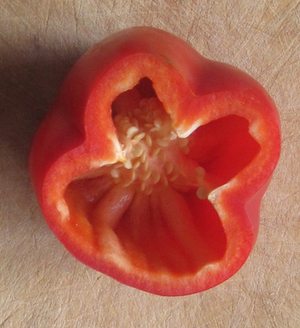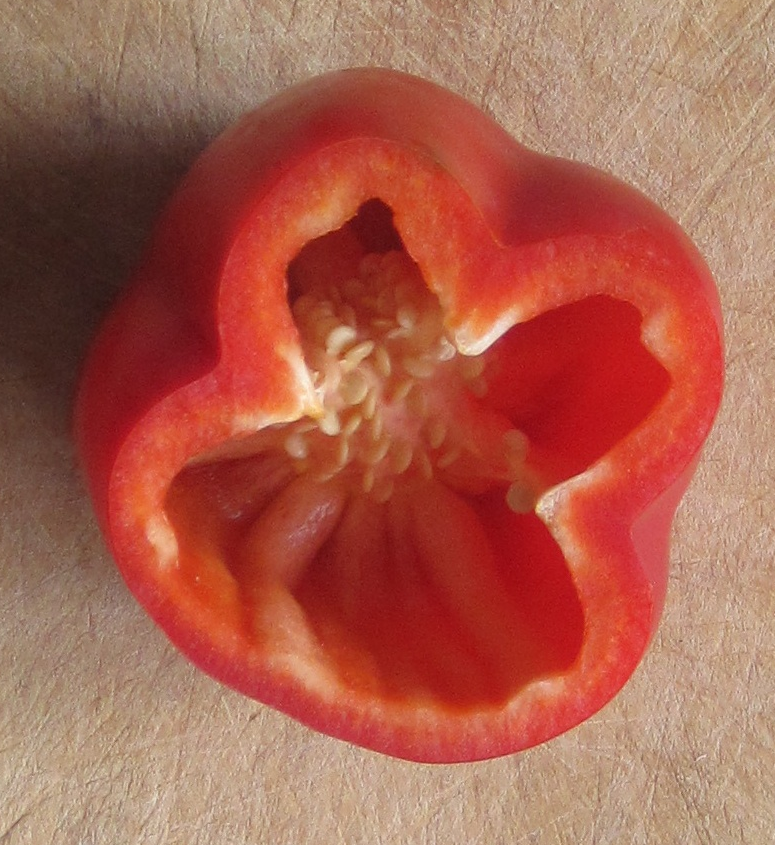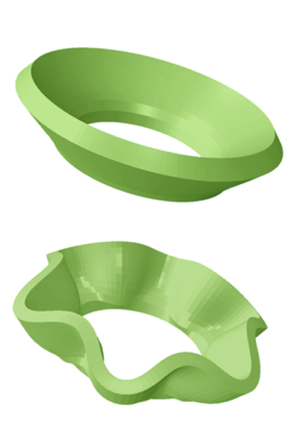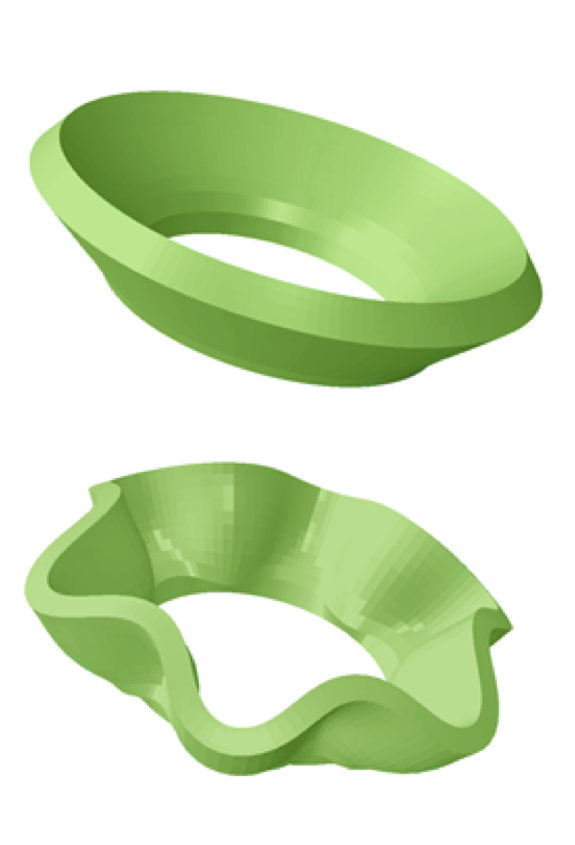How to Make Soft, Wavy Structures
Some of nature’s most delicate forms and patterns, such as the fluted head of a daffodil or the convoluted labyrinths of fingerprints, are created by buckling and wrinkling of soft tissue. In hopes of mimicking such structures for future technology, a team describes in Physical Review Letters a technique for controlling the buckling shapes of small, soft tubes and provides a theory to explain the results. The researchers hope their work will lead to simple techniques for creating complex structures.
In recent years, researchers have become interested in how buckling might generate patterns seen in the natural world, such as the arrangements of leaves and florets on a flower stem or the crinkling and folding of the leaves themselves. But Nicholas Fang of the Massachusetts Institute of Technology in Cambridge and his colleagues had a more practical, technological motivation for studying the regular forms that buckling can generate in soft matter. Fang studies photonic structures for controlling the flow of light, and he wondered whether regular arrays of tiny buckles and wrinkles might scatter and reflect light or sound, channeling and filtering it in useful ways.
To “grow” a deformable material and induce buckling, Fang and his colleagues used a polymer gel that swells when it absorbs water. They used a microfabrication technique to make short tubes with diameters of several millimeters and walls of various thicknesses and lengths. The tubes were fixed at one end to a solid surface. To induce swelling starting at the free end of the tube, the researchers inverted the tubes in oil and let the ends poke into a layer of water below.
Swelling deformed the tubes into truncated cone shapes, which sometimes buckled by forming waves around their circumference, leading to a many-pointed, star-shaped cross section. In general, the shorter the tubes—compared with the diameter—the more wrinkles there were. Surprisingly, the wall thickness had relatively little influence.
To understand the results, Fang and colleagues used a simple model to calculate the shape that minimizes the total elastic energy of a tube. Buckling costs elastic energy because it deforms the structure, but it also reduces the energy from outward bending that a smooth, trumpet-bell shape would require. For given conditions, the minimum energy is a balance of the two contributions and results in a particular number of buckles—which turns out to depend only on the length-to-diameter ratio. The experimental results agreed well with these theoretical predictions of the most stable mode of deformation.
“These patterns are lovely to look at,” says Michael Marder, a specialist in nonlinear dynamics at the University of Texas at Austin, “and [even] if the ability to control patterns is not yet at the level of control that is likely to interest engineers, it’s a promising step forward.”
Fang says the results may help explain some natural systems—it’s no coincidence that the buckled gel rings resemble slices of bell pepper, for example. “Bell peppers can be considered as a tubular structure that grows under constraints from the ends,” he says. “Often we find a slice of slender pepper displays a triangle shape, and that of short and squat peppers appears square or even starlike.”
Xi Chen of Columbia University in New York, who has studied the buckling patterns on the surfaces of fruits and vegetables, is not yet convinced by the connection with nature. “It’s not yet clear where the rather strict constraint on swelling—the key for obtaining the shapes described in their paper—comes from in nature. It’s interesting work, but there’s still a large gap before it could be applied directly to natural systems.”
But mathematician Alan Newell of the University of Arizona in Tucson, who has studied the role of buckling in the growth patterns of leaves, says the results represent important progress. “What’s good about this work is that they do a precise experiment, and their results tend to agree with simple theories.”
–Philip Ball
Philip Ball is a freelance science writer in London. His latest book is How Life Works (Picador, 2024).







